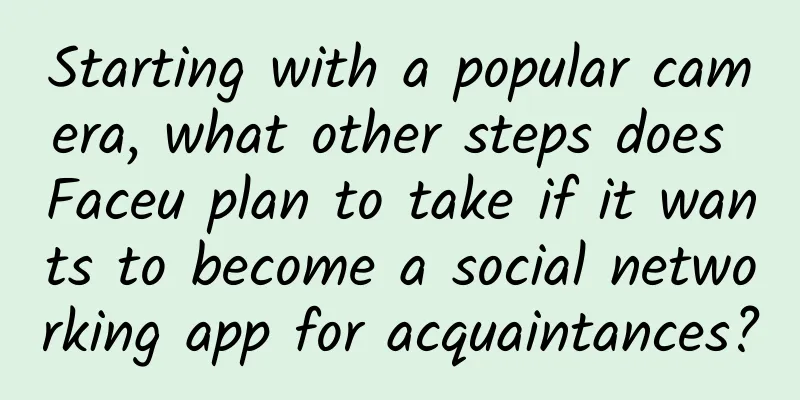Looking at "Short Video Social Networking" from the Product Dilemma of Audiovisual UGC

|
The productization of UGC has been relatively good in the text and image fields, such as Facebook and Instagram, but there has been no successful achievements in the audio-visual field, such as the abrupt end of "Weishi". In the field of text and pictures, newspapers and magazines as professional media are not much different from Facebook, which is regarded as a product. Newspapers and magazines are a kind of PGC aggregation, while Facebook is a UGC aggregation. The content organization is similar, and both regard the overall content as an outlet, not a single article or a single picture. On the commercial side, Facebook's information flow advertising is ultimately a channel monetization, which is no different from newspapers and magazines. For products like Facebook, there is not much barrier to enter the professional media field, such as its recent news aggregation. The reason is that in the field of text and pictures, PGC and UGC are basically similar in content organization and business logic. However, in the audio-visual field, the operating modes of UGC and PGC are very different. A single audio-visual UGC, like a single article, has almost no commercial value. However, audio-visual PGC has a good commercial depth, which is enough to carry out commercial design based on "single content". In this case, compared to the fact that text and image PGC and UGC almost share the same operating logic, audio-visual PGC and UGC find it difficult to share the same productization system. For example, Tudou and Youku, which started out as UGC in the early days, had a very painful transition to professional PGC, and even now, you can't say that they are fully formed. At present, the commercial value of the text and image industry is almost evenly distributed across the entire plate, and a single article or image does not have commercial independence. In the audio-visual field, however, high-quality content is used as a unit to form value peaks. In fact, the development of PGC in the audio-visual field has made a generational leap, that is, it has upgraded from "channel monetization" to "content-based" business design. However, in the UGC field, whether it was Wang Wei's era or Gu Yongqiang's period, the content aggregation adopted always gave people the feeling of being a generation behind. This old strategy used by the old media industry is probably the reason why the productization of audio-visual UGC is difficult to succeed. But the aggregation of text and image UGC can form great products (such as Facebook), so why can't the aggregation of audio-visual UGC work? After all, compared with individual audio-visual UGC, a single article or picture does not seem more valuable. Why does the aggregation of audio-visual UGC lack commercial depth when the same content is aggregated? Although the former has a better community atmosphere, the "short video social networking" that has been commercialized by introducing social elements in the market in the past two years does not seem to have achieved significant success. Compared with text and pictures, audio-visual UGC costs more. After all, text and picture UGC products have established a profit model for information flow advertising, while audio-visual UGC has not yet found one. Secondly, text and picture UGC products have just started to make profits, and the high-cost audio-visual UGC channel may not realize higher profits than text and pictures, so continued losses are foreseeable. Meanwhile, the UGC community for text and pictures is a place where everyone can speak, and both content organization and business logic rely mainly on scale. However, the threshold for speaking in the audio-visual UGC community is very high, which hinders most users from participating. The number of Internet users is 649 million, while the number of mobile video users is 310 million, which is only half of the former, and the disadvantage is obvious. Even so, an anonymous industry insider believes that there have been major changes in the hardware field in the past six months, especially the thousand-yuan smartphones with tens of millions of pixels, 8-core processors, and 4G network functions, which are conducive to lowering the cost of video creation. Coupled with the reduction of broadband rates, the external environment is becoming more conducive to the development of audio-visual UGC products. He even believes that if "short video social networking" based on "content aggregation" is to be successful, it needs to focus on operational strategies. Among them, how to capture the network natives born between 1995 and 2005 is very important. Behind this theory is that the reason why "video social networking" is difficult to do in China is that the Chinese are relatively introverted and are not used to expressing themselves through images. This ethnic culture is difficult to solve through technology. However, he feels that the post-95s and post-05s generations are very special. They are a generation that grew up with the Internet and have been deeply influenced by Internet culture throughout their growth period. Their behavioral habits are different from those of traditional Chinese people. Therefore, the post-95s to post-05s generation is strictly speaking freer and more liberated, closer to the world, and has relatively weaker regional and national cultural attributes. If they are properly guided, it will help solve the disadvantage that Chinese people are not used to using images to express themselves. In this way, "video social networking" will indeed have a greater chance of success if it cuts into this user group. As a winner of Toutiao's Qingyun Plan and Baijiahao's Bai+ Plan, the 2019 Baidu Digital Author of the Year, the Baijiahao's Most Popular Author in the Technology Field, the 2019 Sogou Technology and Culture Author, and the 2021 Baijiahao Quarterly Influential Creator, he has won many awards, including the 2013 Sohu Best Industry Media Person, the 2015 China New Media Entrepreneurship Competition Beijing Third Place, the 2015 Guangmang Experience Award, the 2015 China New Media Entrepreneurship Competition Finals Third Place, and the 2018 Baidu Dynamic Annual Powerful Celebrity. |
<<: Mango TV's president changed due to Hunan Radio and Television Group's listing
>>: With the right time, place and people, will the era of paid video websites arrive?
Recommend
What are the requirements for adding keywords to Baidu’s bidding promotion?
What are the requirements for adding keywords to ...
Analysis of Taobao Affiliate Promotion on Tmall Double 11 in 2020
The annual Tmall Double 11 promotion is coming ag...
This is a versatile activity plan!
A universal activity plan , so you don’t have to ...
These two practices are a waste of smartphones
Smartphones play an increasingly important role in...
Is it really more cost-effective to rent an iPhone for less than 3,000 yuan a year than to buy one?
The latest iPhone 7 series has improved camera per...
1263.5 cubic meters per second! The largest hydropower station under construction in the upper reaches of the Jinsha River successfully cuts off the flow
On the 11th, the State Energy Group announced tha...
Why does Xiaomi Tablet use a 7.9-inch retina screen?
Yesterday, Huawei released the 8-inch tablet M1, p...
Original touch transmission: TCL Momoda
Many people are curious about the name of the phon...
Why Lenovo's mobile phone is failing? Arrogant, conservative, and out of touch
Lenovo Group CEO Yang Yuanqing's internal spe...
Apple's 2022 product line leaked! Transformation to Apple Silicon within two years, goodbye Intel
A year ago, Apple unveiled the mystery of Apple S...
Sharp's return to China lets Xiaomi MIX know what black technology is
August 8, 2017 is a magical day. On this day, VAI...
Wolves and moose entered the same isolated island: 69 years later, the wolves were extinct!
Many people may be curious about what would happe...
“I’m autistic again”… What are real autistic people like?
In recent years, young people like to use joking ...
A powerful national device: Earth system numerical simulation device
The "Earth System Numerical Simulation Devic...
Tesla's fully driverless car is about to hit the road and can also recognize signs
For Tesla CEO Musk, building a pure electric gree...









